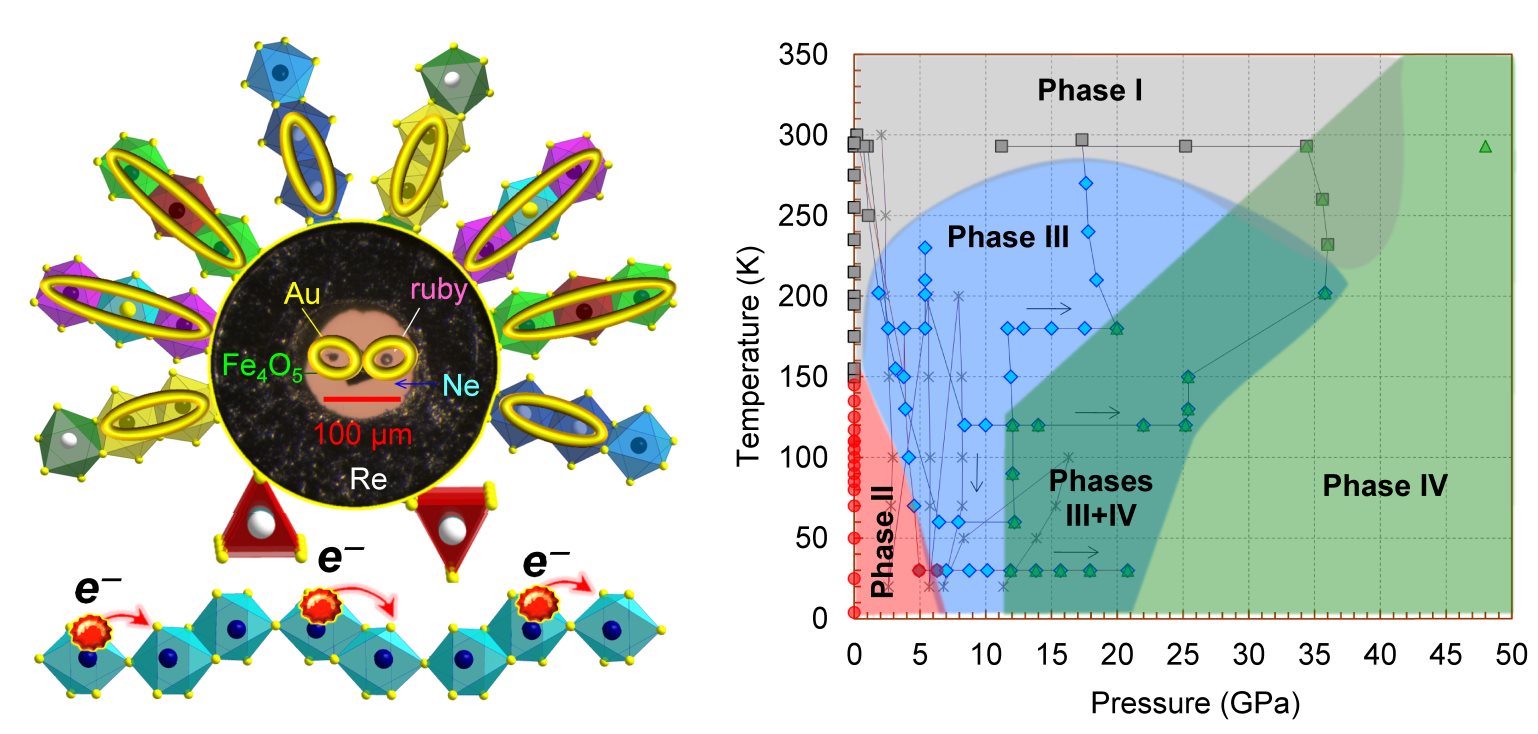
Pressure tuning of charge ordering in iron oxide
S. V. Ovsyannikov, M. Bykov, E. Bykova, K. Glazyrin, R. Sekhar Manna, A. A. Tsirlin, V. Cerantola, I. Kupenko, A. V. Kurnosov, I. Kantor, A. S. Pakhomova, I. Chuvashova, A. Chumakov, R. Rüffer, C. McCammon, and L. S. Dubrovinsky
Nature Communications 9, 4142 (2018), https://doi.org/10.1038/s41467-018-06457-x
https://www.nature.com/articles/s41467-018-06457-x
Recent high-pressure high-temperature (HP-HT) studies established that an iron oxide with unconventional Fe4O5 stoichiometry may be an abundant phase of the Earth's Upper Mantle. We synthesized high-quality single crystals of iron oxide, Fe4O5 at HP-HT conditions and investigated the effect of high pressure on charge ordering processes at low temperature using single crystal X-ray diffraction, Mössbauer spectroscopy, and magnetization measurements.
We found that cold compression of Fe4O5 stimulates electron transfer between iron cations of different coordination and leads to the formation of novel charge-ordered phases. Two new charge-ordered phases were discovered, the first of which (labelled as phase III) comprises both dimer and trimer units, whereas, the second one (labelled as phase IV) exhibits an overall dimerization involving both the octahedral and trigonal-prismatic chains of iron in the crystal structure. Furthermore, a charge-ordering temperature in the phase III approaches the room temperature, two-fold exceeding the charge-ordering temperature (120 K) of the famous Verwey transition in another mixed-valent iron oxide, magnetite (Fe3O4) mineral. Based on the results obtained, we concluded that the average oxidation state of the iron cations can pre-determine a charge-ordering process.
In addition, we established that the phase IV conserves to HP-HT conditions corresponding to those in the Earth's Mantle, thereby bridging the low-temperature charge-ordering phenomena on the one hand, and high-temperature properties of the iron oxide in the Mantle on the other hand.

Left: Schematic representation how using a diamond anvil cell tool, one can produce exotic charge-ordered phases in Fe4O5 comprising both dimer and trimer units. Right: Low-temperature high-pressure phase diagram of Fe4O5 constructed based on several single crystal x-ray diffraction experiments.
Tel: +49-(0) 921 55 3700 / 3766, Fax: +49-(0) 921 55 3769, E-mail: bayerisches.geoinstitut(at)uni-bayreuth.de